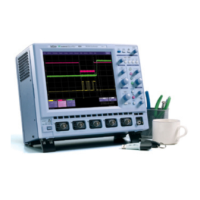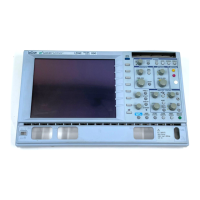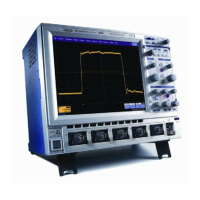X-Stream Operator’s Manual
WM-OM-E Rev I 99
Used primarily in single-shot applications, and usually with a pre-trigger delay, Dropout
trigger can detect lost signals. The trigger is generated at the end of the timeout period
following the last trigger source transition. You can select a timeout period from 2 ns to 20
s.
Logic trigger enables triggering on a logical combination (pattern) of five inputs: CH1,
CH2, CH3, CH4, EXT. You have a choice of four Boolean operators (AND, NAND, OR,
NOR), and you can stipulate the high or low voltage logic level for each input
independently.
Determining Trigger Level, Slope, Source, and Coupling
Level defines the source voltage at which the trigger circuit will generate an event: a change in the
input signal that satisfies the trigger conditions. The selected trigger level is associated with the
chosen trigger source.
Trigger level is specified in volts and normally remains unchanged when you change the vertical
gain or offset. The amplitude and range of the trigger level are limited as follows:
• +/-5 screen divisions with a channel as the trigger source
• +/-400 mV with EXT as the trigger source
• +/-4 V with EXT/10 as the trigger source
• +/-40 mV with EXT*10 as the trigger source
• None with LINE as the trigger source (zero crossing is used).
Coupling refers to the type of signal coupling at the input of the trigger circuit. Because of the
instrument's very high bandwidth, there is only one choice of trigger coupling: DC 50 ohms.
However, as a visual check of where ground is, you may switch the channel to ground coupling at
any time while testing.
With DC coupling, all of the signal's frequency components are coupled to the trigger circuit for
high-frequency bursts.
Slope determines the direction of the trigger voltage transition used for generating a particular
trigger event. You can choose a positive or negative slope. Like coupling, the selected slope is
associated with the chosen trigger source.

